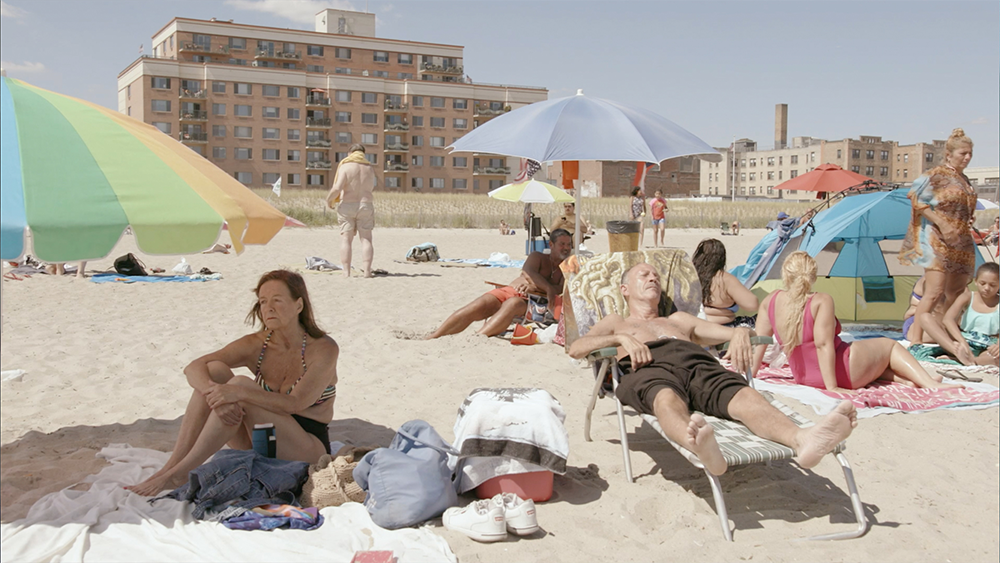
Cannes Docs, the Cannes Film Market event dedicated to documentary film, brought together an expert industry panel to discuss the place of creative documentary in the fast-changing audiovisual market, where words like “content” and “format” are increasingly replacing “film” and “language.”
Joining DAE co-founder Brigid O’Shea on stage for the May 21 talk were Emilie Bujès, artistic director of Swiss international doc film fest Visions du Réel (VdR); Edo Choi, associate curator of film at the NYC Museum of the Moving Image; and Ryan Krivoshey, president and founder of distribution company Grasshopper Film.
Kicking off the conversation, the question of what defines a creative doc was thrown up by O’Shea, who joked about the “dirty reputation” of experimental films.
Choi pointed out that while notions such as experimental, avant-garde, cinéma vérité or underground have a particular historic meaning that stems from generic forms born in the 1960s, which are now criticized for being outmoded and failing to address current political questions, there is still “a great yearning for them, for what they represent in the context of cinema’s continued relevance and ability to speak to the times.”
Bujès noted that she avoids using the word “experimental.” Instead, she explained, she “packages films in a way that’s not scary [for the audience].”
“We have the chance to program 160 films at VdR. So, we can create a diverse offer, [which] allows us to get people to enter through one door and we try to push them in a direction they might not necessarily go.
“That’s our main role: to fight for people to be aware that those films exist, because there are not so many ways to watch them,” says Bujès, who created an attractive online platform during the 2020 lockdown edition, which remains popular and allows accredited guests who cannot make it physically to the fest to watch curated films during and after the event.
Following the same pattern, on the industry side, “we mix projects that are more understandable for a certain kind of industry, and we accompany them with projects that are slightly more challenging but still not impossible – it’s really about creating something in order to push things that are slightly more radical.”
Bujès also noted that VdR audiences have become younger in recent years thanks to a dynamic campaign around the festival, and a raft of special events and parties that draw younger crowds.
On the question of the role of film festivals in promoting the distribution of creative docs, there was consensus that “the model is not working as it should,” in Krivoshey’s words.
“Certain films premiere at certain festivals just to get a certain logo, a laurel – and it’s not always the best film: if you’re premiering at a fest but you’re overshadowed by all the Oscar-bait that’s being premiered that year, it will be much harder to get a foothold in the distribution landscape after that,” he said.
“If you premiere at a different fest that really nurtures filmmakers and the films, and pushes them to the right press, you’ll have a much better chance of catching the eye of a distributor like myself.”
Credit: Pierre Alexis Chevit
That is exactly what Choi and Bujès strives to do at their festivals, with tailor-made programs like VdR’s Opening Scenes Lab for filmmakers presenting their first film in the official selection.
While the theatrical landscape remains tough and public broadcasters keep cutting back on funding, there are many other non-theatrical avenues, in particular streaming, that have made it easier for docs to enter the U.S. market in recent years, according to Krivoshey, who is a strong believer in support material, study guides, and non-theatrical campaigns.
A typical example, he said, was the 2019 title “The Hottest August” by Brett Story, distributed by Grasshopper: Though the doc enjoyed a good theatrical release, streaming and non-theatrical releases, including schools, libraries, festivals, and museums, were very strong.
At the height of the pandemic in 2020, Grasshopper launched a curated academic streaming platform called Projectr, aimed at U.S. libraries, museums and universities with the intention of bringing more creative films to audiences by the likes of auteurs such as Bong Joon Ho, Claire Denis, Hong Sangsoo, and Pedro Costa.
Summing up the conversation, Choi, who also heads the MOMI’s First Look festival, an annual showcase for new international cinema, circled back to the initial question: “One of the challenges of finding the right audience that best fits the film without pigeonholing it is related to the question of what truly constitutes a creative doc film.
“And the purpose of a festival like First Look, or in a larger way VdR, or of a distributor like Ryan, is to always try to enlarge the size and make-up of those possible audiences, and allow whatever films emerge to have the best shot at reformulating society.”
Cannes Docs ran as part of the Marché du Film from May 18 through May 23.














